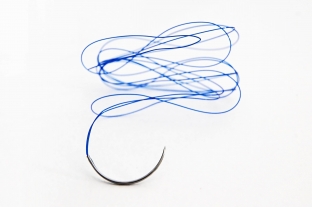Plastic surgery – it is an art form in which the doctor, wielding a scalpel, carves out new features for his patient like a sculptor. The work of a plastic surgeon is a very delicate matter, in which every, even the most seemingly insignificant detail affects the final result. In plastic surgery, as in any other branch of surgery, the stitching of wounds occurs using surgical threads. The doctor should approach the issue of choosing a suture material with all seriousness, since correctly selected surgical threads are the final touch in the entire process of surgical intervention.
How does the quality of the suture material affect the result of the operation
Suture material in plastic surgery is selected in accordance with each type of surgical intervention. The quality of suture materials – this is one of the main factors influencing the process of postoperative wound healing. All patients in the postoperative period are looking forward to the day of suture removal, because only then it is possible to consider and evaluate the result of the operation in more detail. The suture material in surgery is used not only to close skin wounds, but also to stitch other tissues of the body, therefore, when choosing surgical threads, one should take into account what will happen to the tissues that are stitched in the future.
Suture material:
- requirements for suture materials;
- basic properties of absorbable sutures;
- when it is appropriate to use a non-absorbable suture.
Requirements for sutures
Today, plastic surgery places high demands on the quality of suture materials. The main requirements for surgical sutures are as follows:
- sutures must be biocompatible – that is, the threads should not produce a toxic, teratogenic and allergic effect on the patient's body;
- biodegradation – the suture material must be able to disintegrate and be excreted from the patient's body, while the rate of this process should not exceed the rate of scar formation;
- threads must be atraumatic – this means that the surgical sutures must have sufficient flexibility and elasticity, connect well with the needle and not produce a "spreading" thread. effect;
- sutures must be strong – the strength of the thread must guarantee the preservation of the suture until the complete formation of the postoperative scar.
Basic properties of absorbable sutures
Absorbable sutures are the main suture material in modern plastic surgery, as they do not require removal and dissolve in the wound on their own. The main absorbable sutures are:
- catgut – absorbable suture material, which is completely absorbed within 60-90 days after surgery. Most relevant when suturing the posterior surface of the auricle after otoplasty, or when closing wounds of the scalp;
- Vicryl and Dexon – These are polyfilament coated surgical sutures. Such threads are stronger and less reactive than catgut. Vicryl completely resolves 70 days after the operation, and Dexon – after 90 days;
- polysorb – coated absorbent suture. Its density is even higher than the density of Vicryl and Dexon, while the complete resorption of the thread occurs 70 days after surgery;
- monocrylic – elastic absorbable suture material that practically does not cause an inflammatory reaction and is completely absorbed no earlier than 90-120 days after surgery.

When is it appropriate to use a non-absorbable suture
Non-absorbable suture materials differ from absorbable ones in much higher strength, better manipulation properties, less reactogenicity, while such materials are not able to disintegrate and be excreted from the patient's body. Such suture materials are most often used for fixing implants and cartilage structures, as well as for suspending soft tissues of the body. These include:
- polyamides – have high strength and flexibility, but cause a fairly pronounced reaction from the tissues;
- piloethers – more inert but less elastic than polyamides;
- polyolefins – have high inertness, elasticity and strength, guarantee the reliability of the surgical site;
- metal clips – often used in plastic surgery for closing wounds on the scalp. Their main advantage is the ease of application and removal, as well as the formation of a reliable and fast connection of damaged tissues.







Add a comment